If you’re a man wondering how to mix and match clothing colors, you’re in the right place. This in-depth style guide has everything you need to know.

You’ll learn about why colors matters, color matching basics, defining accents, identifying your complexion, practical use of the color wheel, how to mix & match colors for various scenarios, excellent contrasting colors and much more!
Let’s dive in.
Why Color Matters
As a rule, most men are firmly convinced that the ability to dress well refers only to the “fragile” half of humanity—women, and men shouldn’t bother to dress the part. However, learning to correctly combine colors is far from just a superfluous skill.
A modern man should strive to create a holistic, harmonious image that’s going to delight the eye and match the mood, situation, and tell others who you are or who you want to be.

One of the main components of developing your personal style and dressing well is by choosing the correct colors. Some men are convinced that only expensive jackets, shirts, and ties from the most fashionable, high-end designers will look great (and they could) BUT they’re not going to create your outfit’s desired effect if you fail to choose the right and the appropriate colors.
Moreover, an unsuccessful combination of colors, as well as an excessive amount of them, can create a faceless image—worse yet—repulsive one. You can call the correct variety of colors an art that anyone—yes, even you—can master.

Now that we’ve covered why the colors you choose to wear matters, let’s dive a little deeper into the basics of color matching. This is how guys can mix and match clothing colors.
If you’d prefer watching, a video is below:
Subscribe to the GW YouTube channel.
The Basics of Color Matching
First, define the primary color for the base of your look. Typically, the base color is assigned to a suit, shirt, or jacket. From there you can then build out the rest of the colors from that base.
For starters, choose neutral, achromatic colors, we’re talking black, grey, white, brown, navy, or even dark olive. These neutral colors are very convenient as primary colors since they can quickly and safely be combined with most all other chromatic colors.

Particular attention should be paid to the charcoal or medium grey color, which literally can make other colors within the same palette all in tune with each other.
Additionally, it would be best to never forget about the three colors rule. And that is, if there are more than 3 colors in your outfit, it’ll be more challenging to achieve harmony with the combination of shades, especially if all the colors are vivid and competing for attention.
» Readers’ Favorite: The Navy Blazer: An Ultimate Guide on this Men’s Style Essential.
Now let’s talk defining accents.
Defining Accents
A man’s wardrobe is somewhat limited in selecting items that can create an accent. But it’s precisely the accentuation of color that can create a unique look. By putting the proper emphasis on an accessory or accent piece, you can dilute the monotony of shades and make your presentation livelier in the eyes of others.



To set a defining accent for example, you can use a scarf, tie, boutonniere or pocket square, a watch strap, sunglasses, and in some cases, even socks can be used for emphasis. The main thing that must be observed when choosing accents is that they should supplement other elements in the outfit, instead of clash.
And now let’s talk complexion.
Men’s Wardrobe Color Guide
It’s imperative to combine colors that complements your natural complexion. After all, the main essence of dressing up is to emphasize your facial features from the practical side, making it more expressive. By nature, men don’t really think about how a particular color of clothing suits their faces.

In this case, you can and most certainly should learn from us women who always try on an outfit in front of a mirror before buying.
To understand which color scheme is suitable for your natural complexion, you need to determine the degree of contrast, which is the difference between your eyebrows, hair, and skin color. To simplify, there are three main types: high-contrast, medium-contrast, and low-contrast.
Consider Your Complexion
High Contrast Type: Black Hair – White Skin

For this type, the best solution would be the maximum contrast, for example, choosing a black tie with white stripes.
Low Contrast: Blonde Hair – Fair Skin

The use of minimally contrasting combinations make the most sense here so that the clothes don’t draw too much attention. Remember, it’s super important to maintain a balance by searching for common characteristics between your complexion and your clothing.
Medium Contrast Type: Eyes, Hair And Skin Blend In Together
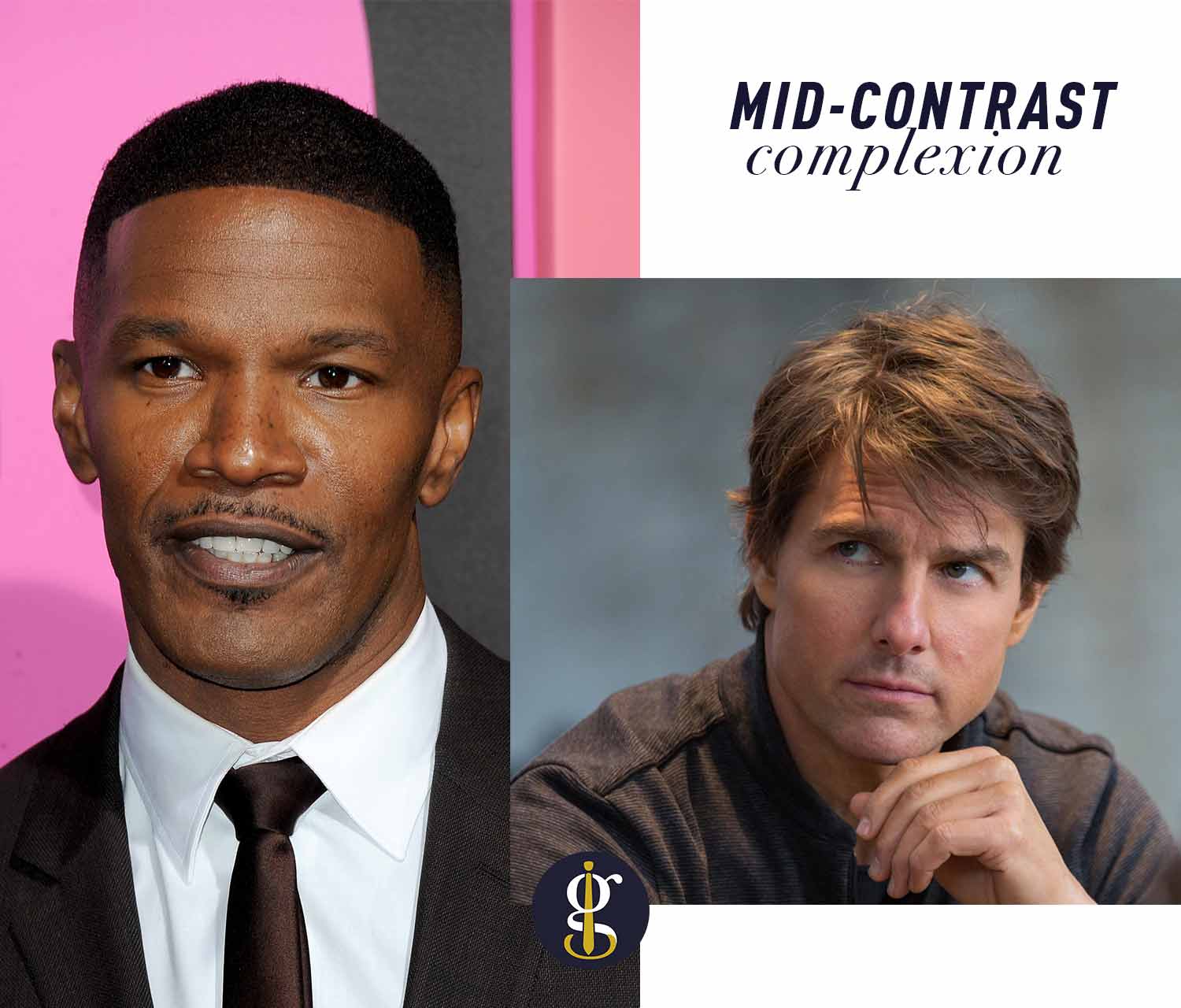
This is most advantageous type that can have many more color options for clothes than others as a myriad of colors look great with your complexion.
An equally important point is your eye color, which should also be taken into account when choosing your wardrobe.
The most important thing to remember when creating an outfit is the result. More specifically, a holistic image that’s going to reveal your best qualities, lend elegance and attractiveness, and make you stronger and more confident as a result.

By choosing different colors, textures of fabrics, patterns, you can add some variety even to the strict classic style of men’s clothing. Furthermore, many variations are permissible for modern business attire. But to look elegant in any situation, it’s necessary to combine colors and fabrics correctly.
And that takes us to the next point, the boring, yet trusty color wheel.
Practical Use of the Color Wheel
The color wheel can help dispel fears and doubts about choosing the right combination of colors for your wardrobe. Using this genuinely magical tool, you can use colors in the following proportions:
- Base color – 60-70%
- Complementary color – 20-30%
- Accent color – 5-10%

A harmonious balance can be achieved when using one to three colors in your ensemble; if there are more colors, then the integrity of the outfit may appear scattered and noisy.
The easiest way is to combine monochrome colors, i.e., shades of the same color. You can also easily combine a base color with analogous colors on the sides of the base color since they’re so similar.
When coordinating outfits, you may want to consider using complementary colors which are the opposite hues on the color wheel.

In their most basic form, they are one primary color and the secondary color that is created by mixing the other two primaries, eg. the complementary color to yellow is purple, which is a mix of blue and red.
Keep in mind that complementary colors are very high in contrast — which is why sports teams tend to use them because the colors simply pop.
However, in menswear with such contrasting combinations, you need to be extremely careful, so it’s a good idea to mix in the neutrals of navy, gray, black or white to ground the look.
Men’s Color Mix & Matching Guide
Today, modern men are moving beyond conservative ideas about fashion and style. The ability to dress elegant, fashionably, and suitably is essential to make the best impression and be your most confident self. And color plays a massive role in creating your image.

While some men can intuitively feel what looks good and which colors and shades are incompatible, but this is rare with most guys. Thankfully, you can in time, acquire it by mastering the basic rules of GW’s Color Matching Guide for creating a harmonious, stylish outfits.
Now let’s get into the basics of the all-important, color coordination and combinations.
Color Coordinating & Combinations
The art of combining colors is a crucial nuance. After all, even the most expensive things can look ridiculous together and spoil the impression it’s meant to have, just like flashy, tasteless outfits. To avoid these mistakes, you need to master the basic rules of color combinations.
The first step is to choose the main shade as the base color of your fit. As mentioned previously, it can be a suit or a combination of pants and a shirt.
It’s recommended to take neutral achromatic palettes as a basis, for example:
- Black
- Grey
- White
- Brown
- Navy
The advantage of neutral shades is that they can be perfectly combined with other colors. But don’t get carried away with one hue or a shade. Otherwise, the image can turn out to be too dull, unless monochromatic is what you’re going for. An ideal outfit consists of 2-3 shades, and keep in mind any more than that can lead to the opposite result.
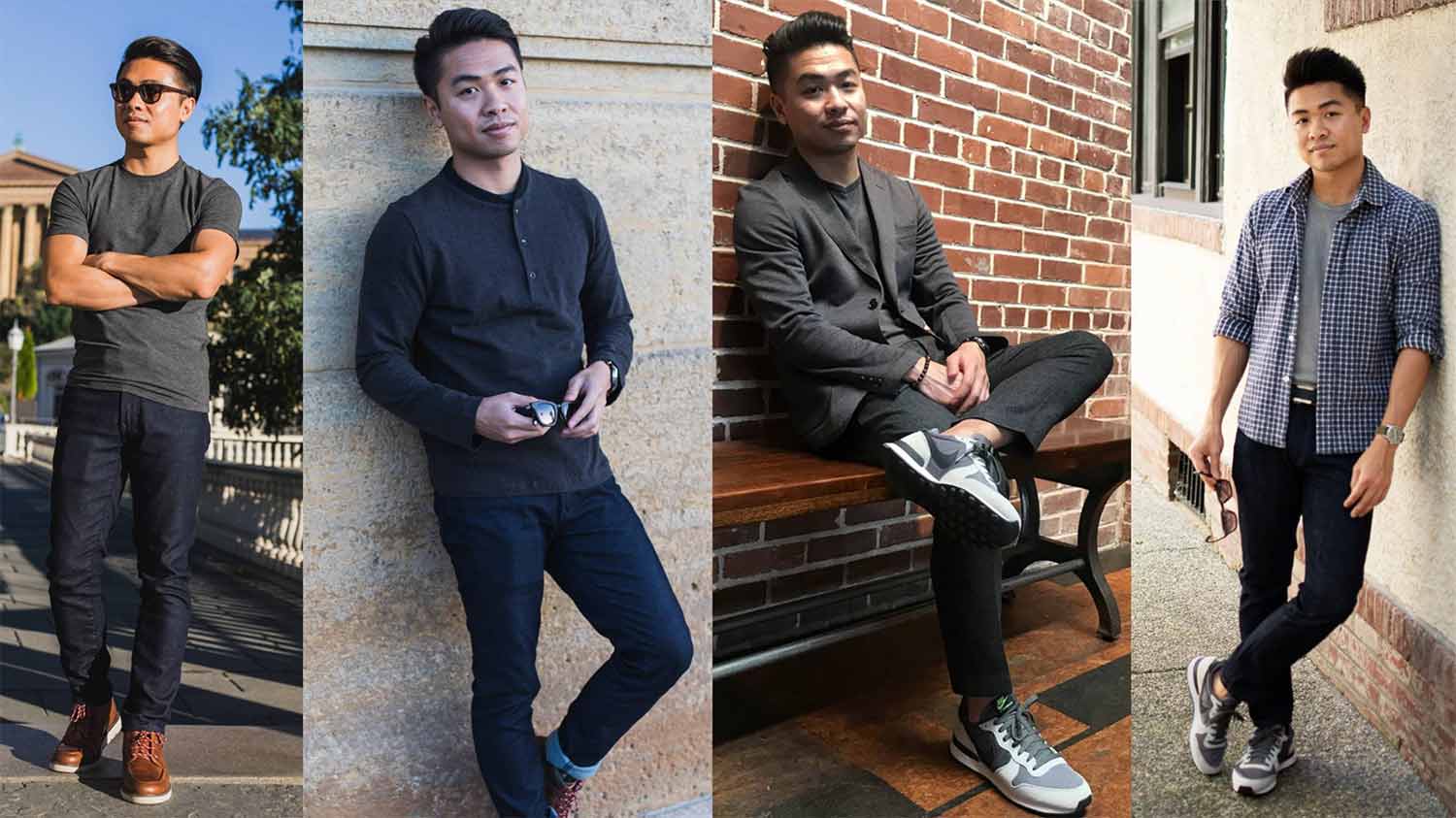
It’s also much easier to combine monochrome colors than printed ones. And the closer the colors are in the color wheel, the easier they combine. For example, a base color and two adjacent sides are excellent solutions. And an even more effective move is a combination of shades located opposite of each other. But here, you need to be confident in your knowledge of color.
Using a color wheel isn’t always possible. Therefore, the most suitable and harmonious combinations are best remembered and practiced. Of course, monochrome sets are the most laconic and elegant ones.
At the same time, spectacular contrast is one of the most expressive techniques in color coordination and combinations, which takes us into our next order of business—contrasting colors.
Quick note: If you’re enjoying this master class on how to mix and match clothing colors, then you’ll probably find my other writing on all things style useful. Each week, I share style tips, inspiration, deals and other things not shared on the blog through my free email newsletter.
To join now, just enter your email address below and click “Get Updates!”
Clothing Color Guide (11 Great Contrasting Colors)
1. Khaki olive and beige
These shades combine just perfectly. Add a white tone to the look to add contrast. An ideal choice for a green palette is brown as well.
2. Red
Red works well with blue, but if one of the tones is darker than the other, two bright shades are not the best choice. Red and yellow can be considered an effective combination, but can be overkill with excessive brightness (McDonalds anyone?) That said, a red and black/white (basic colors) ensemble can be incredibly effective.
3. Violet
The combination of purple in men’s clothing is suitable for those who want to look stylish and emphasize their creativity. Combine it with white, dark grey, and dark greens for a powerful combination.
4. Blue
This palette doesn’t work well with black, but it looks fantastic with white, beige, and brown. You can also use pink or burgundy to add a special vibe.
5. Bordeaux
Bordeaux is a stylish shade that’s not easy to match, but in addition to blue, it looks great with white, black, grey, and brown.
6. Beige
This neutral shade goes well with lighter tones—think white, blue, and light red. Just note that the more yellow the beige is, the more difficult it is to combine.
7. Black
This versatile color works well with various colors, but light options are the most beneficial. White, pink, blue, mint are great accompanying colors with black, and a red tint can add expressiveness and visibility to a gloomy look.
8. White
Another neutral option that can be combined with almost any palette, but you need to consider some of the nuances. White looks more attractive with cold shades—think blue, light blue, black, graphite. However, beige and sand will work too.
9. Grey
Light grey looks better in the company of light shades of other palettes, such as pink, blue, white. While dark grey looks better with dark: black, burgundy, blue.
10. Brown
With browns the shade is also essential. Light brown tones look good paired with a cream shade, blue, and white. Dark ones will make an exciting contrast with blue, black, burgundy, dark greens. All brown options look gorgeous with white.
11. Pink
Many guys don’t really like this color, as it can come off as too feminine. However, if you’ve bought a light pink shirt or sweater, it’s relatively easy to combine with other colors. Keep in mind that bright shades require accuracy. Soft shades of the palette can be safely worn with blue, grey, white, beige, brown.
» Readers’ Favorite: You might enjoy this article on the How to Dress Your Age for Men.
And now let’s do some mixing and matching with some basic colors.
Mixing and Matching with Basic Colors
Try these 4 Winning Combinations
It’s far from convenient to carry the color wheel with you when you’re out and about. Therefore, you can focus on several basic color combinations that you can safely use in new looks over and over again.
Now let’s get into these winning color combinations.
1. Military green and pistachio/grass green
Dark military tones with green are combined very easily and naturally in men’s clothing. This color combination will be perfect for spring and autumn. For example, it could be military green jacket and a pistachio green chinos a white shirt/t-shirt.
2. Red and green
In the color wheel, these colors are opposite each other, and in men’s clothing, they mix and match just fine. But even though these colors complement each other perfectly, it is better to avoid their highly saturated shades, else you risk looking like you came out of a Christmas card.
To make the look less flashy, you can choose a red or green color that’s lighter or darker in tone. Otherwise, you can use earthy shades of green and red in the same outfit as well.
3. Red and blue
If you want these two colors to really work in tandem in menswear, one color must always be darker than the other. This rule will allow the different colors to take up the majority of the look. It is so important to strike a proper balance between similar colors. Pair red and blue like this and you’ve got yourself a power move.
4. Yellow and red
This combination might be the most difficult but, at the same time, the most effective. Combining these colors in men’s clothing, you need to tread subtly. The same rule applies here as for the combination of red and blue, and you can limit yellow or red to small accent pieces.
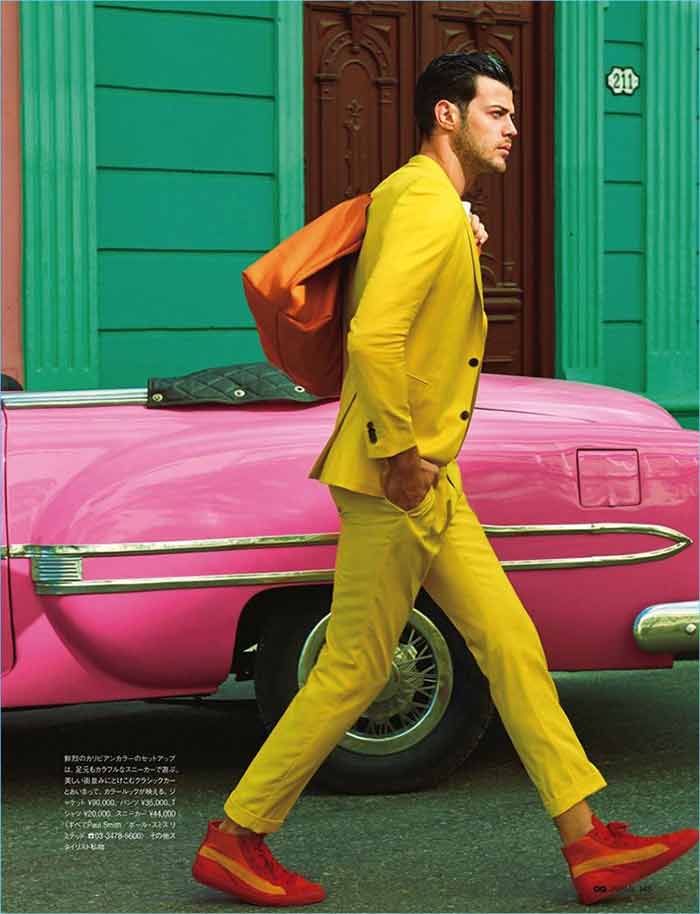
For example, it could be a tie. Combining big things in two colors can connect a red polo shirt with mustard yellow, dark trousers. That could also be yellow shaded loafers and a red blazer.
To maintain balance with tones, it’s beneficial to keep the ensemble in one color temperature. Try to avoid mixing cold and warm shades, as this visually creates a feeling of discomfort.
» Related: You might like this article on the Best Colors for Asian Men.
And now here’s what colors to wear for 3 different situations.
3 Style Scenarios & Colors to Wear
1. Business negotiations power move
If you have an upcoming negotiation or a serious business meeting, and want to appear confident, then it is better to choose clothes in colder, neutral shades.

A highly successful combination is a suit made of quality fabric in charcoal grey, brown or navy, combined with a white shirt and patterned tie. A pair of braces could set the look of just right. Black or dark brown shoes and socks can complete the look.
2. What to wear for a date when things are getting serious?
If we talk about a date, namely a meeting that may become fateful for you, you need to connect creativity, courage and ingenuity. You must strive to create an image of a conqueror – persistent and courageous.
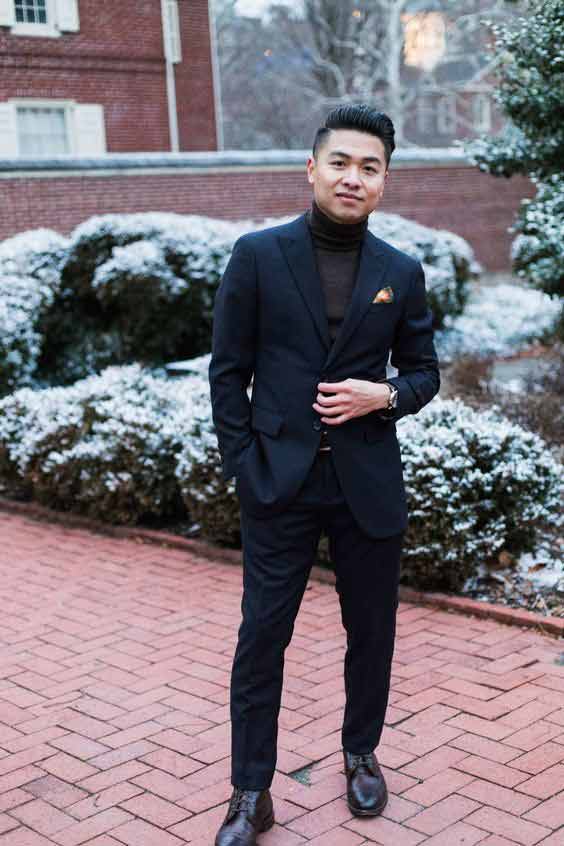
You can position yourself as a calm, strong-willed, reliable man with intelligence using blue clothes, as well as its relevant shades, ranging from blue to indigo blue. As always, blues go extraordinarily well with colors like white, grey, or brown. In this way, you can conquer a woman with family values and stability.
3. Dressing up for the party
A party with friends allows you to relax and show your taste preferences to the fullest, even against the standards and accepted norms.

You can choose colors for your look guided by symbolism. So, green evokes associations with cheerfulness and youth; yellow symbolizes optimism and happiness. The combination of these colors is probably the most harmonious.
And now, let’s talk about picking colors for 3 common styles.
How to Choose Colors for 3 Specific Styles
It is essential to choose colors depending that reflect well on you—your status, age, and style.
1. Business/Office Style

Office or interview outfits best involve the use of neutral, mostly cold shades. Dark grey, white, black is the perfect solution for the strictest dress code. The black palette is the most relevant in this style, and it “raises the degree” of presentability and respectability.
Blue goes well with white, grey, beige, black and other complementary shades. But with a red and black combination in a business look, it is better not to experiment unless you have some major cajones.
2. Vanguard Style

This style doesn’t like boring combinations; you can minimize neutral shades here. Use emerald green, steel, and brown/beige actively. Print is appropriate as well.
3. Casual Style

Street casual style isn’t too strict, but minimalism prevails, so muted shades are preferable to bright ones. You can safely combine neutral and more expressive colors, for example, grey and burgundy. The most popular here will be blue, black, brown, and white to refresh the outfit as well.
And now a master class in color with some stellar looks.
Spectacular Style (5 Bonus Examples)
And now, my personal stylistic selection will clearly show you examples of successful men’s outfits, by putting it all together with colors, patterns and textures.

Street style can be very expressive if you choose beautiful shades of blue, gray, or brown and complement with catchy accessory details.
Light shades are always refreshing for a casual look. Even simple blue jeans in a company with a light shaded linen shirt looks more attractive and so European.
1. Plaid Checkered Everyday Casual Style

A color blocked or plaid checkered shirt, dark jeans, and bright white t-shirt for everyday casual style.
2. Flashy Bold Business Look

In a business look, you can also play with color. Blue and tawny brown are the perfect duos.
3. Light & Powdery Shades of Taupe & Beige

Powdery shades look very stylish in combination with dark or equally light things.
4. Avant Garde Casual Suiting

If you prefer avant-garde, the choice of combinations is excellent. Bright contrasting (contrasting with your skin color as well) compositions will be most relevant here. A prime Pitti Uomo ensemble.
5. Red & Black Power Move

Lovers of chic combinations should pay attention to the tandem of red and black. It is pretty effective and catchy, at the same time elegant and can give off status.
In the end, it’s just style and you’ve got to have fun with it!

About Iryna
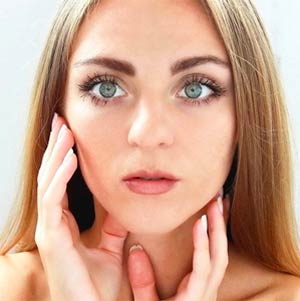 Iryna is a stylist based in Europe. European sense of style is quite different from the rest of the world, which is why so many strive to dress Italian or French, and even the Spanish make clothes with a pinch of frivolously smart style. Check out her take on women’s fashion over at Filosofashion.
Iryna is a stylist based in Europe. European sense of style is quite different from the rest of the world, which is why so many strive to dress Italian or French, and even the Spanish make clothes with a pinch of frivolously smart style. Check out her take on women’s fashion over at Filosofashion.
What would you like to see more of next time?
Let’s continue the discussion over in the Gentlemen Within Private Facebook Community.
Looking forward to seeing you in there.
LIKE WHAT YOU READ?
Get more posts like this plus style tips & advice delivered straight to your inbox.



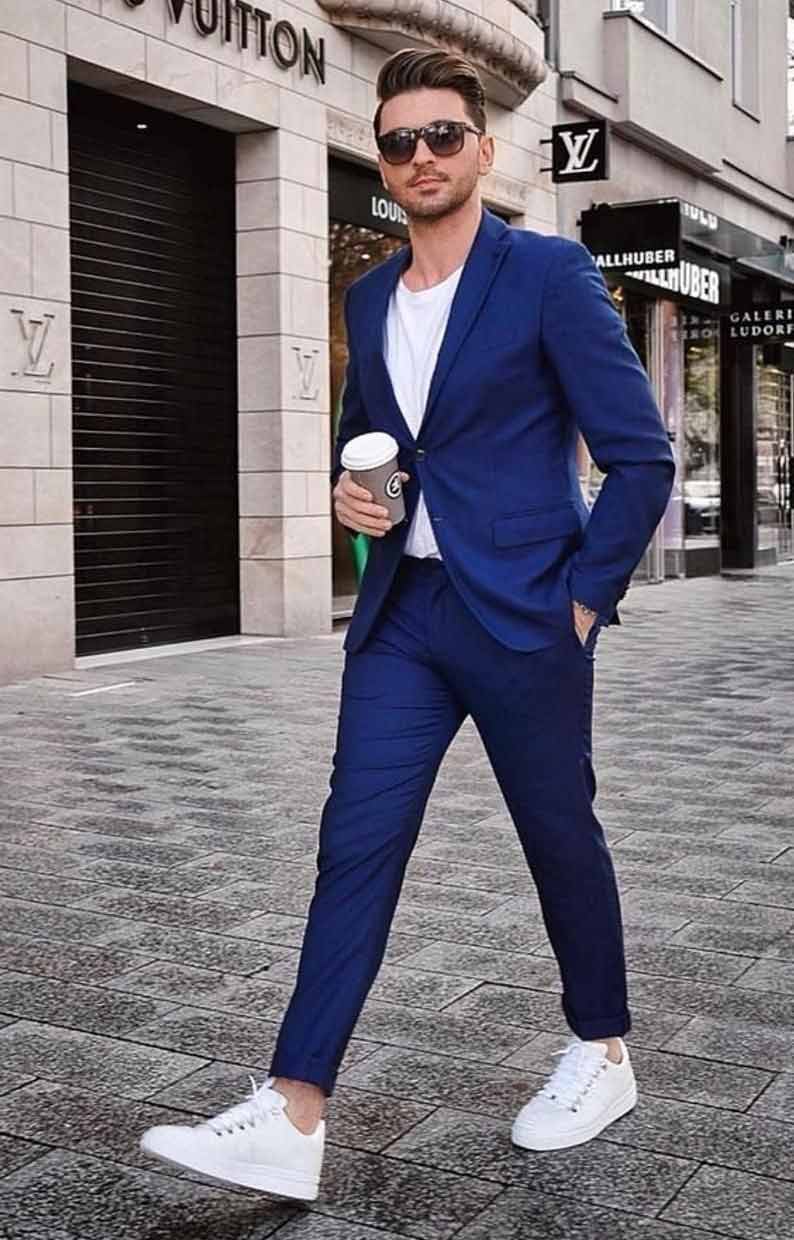
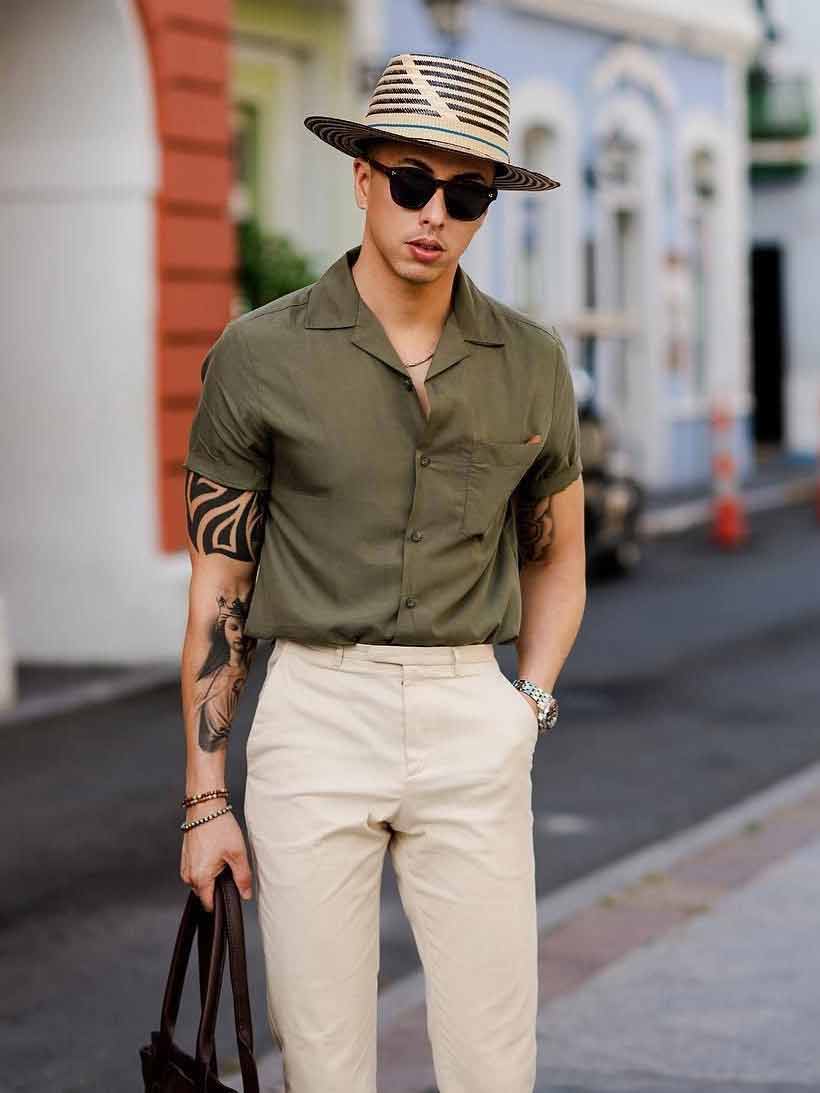

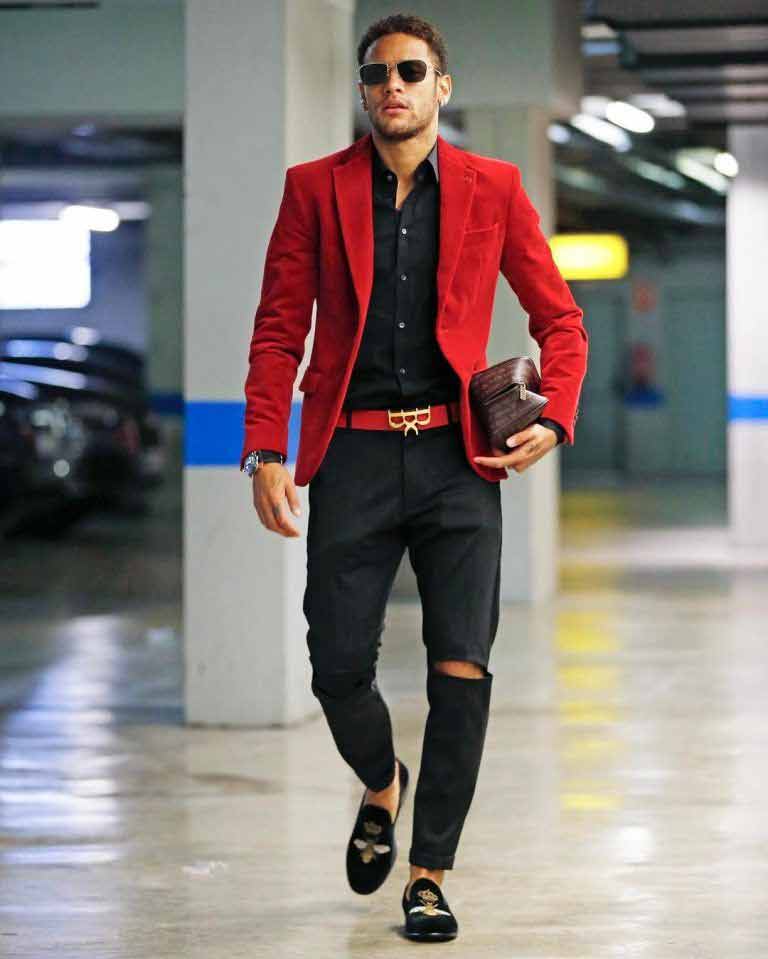






















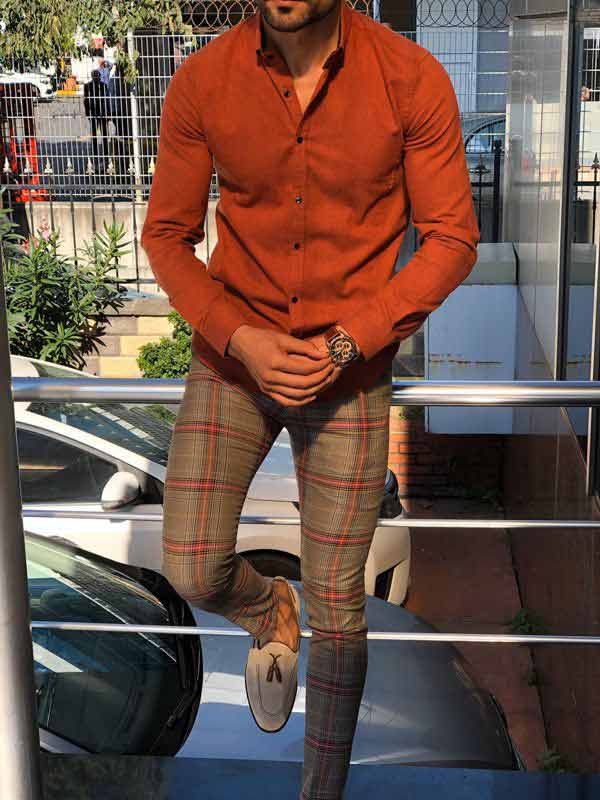







Drop a Line!